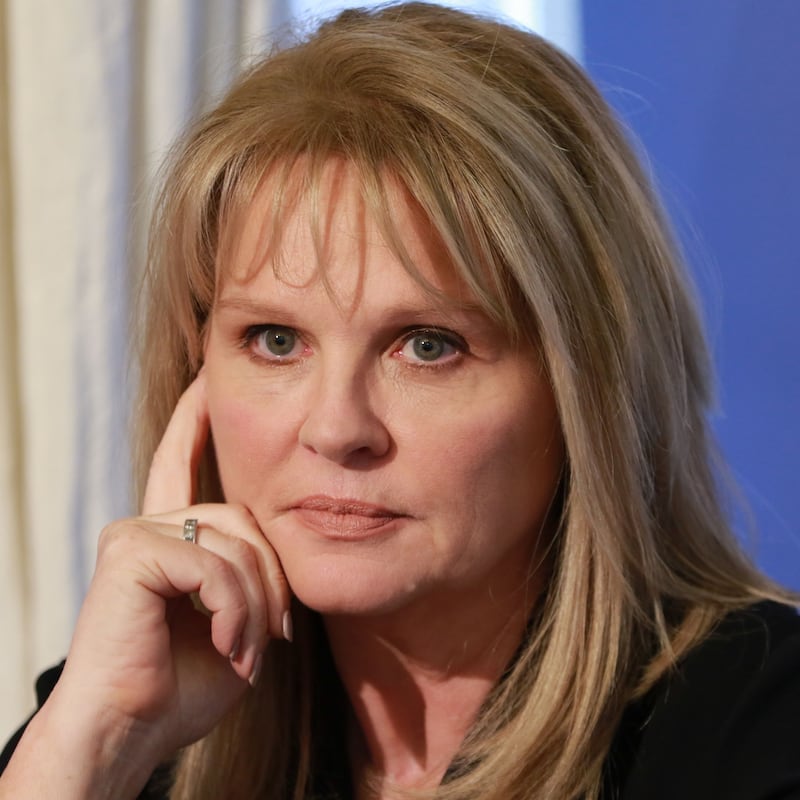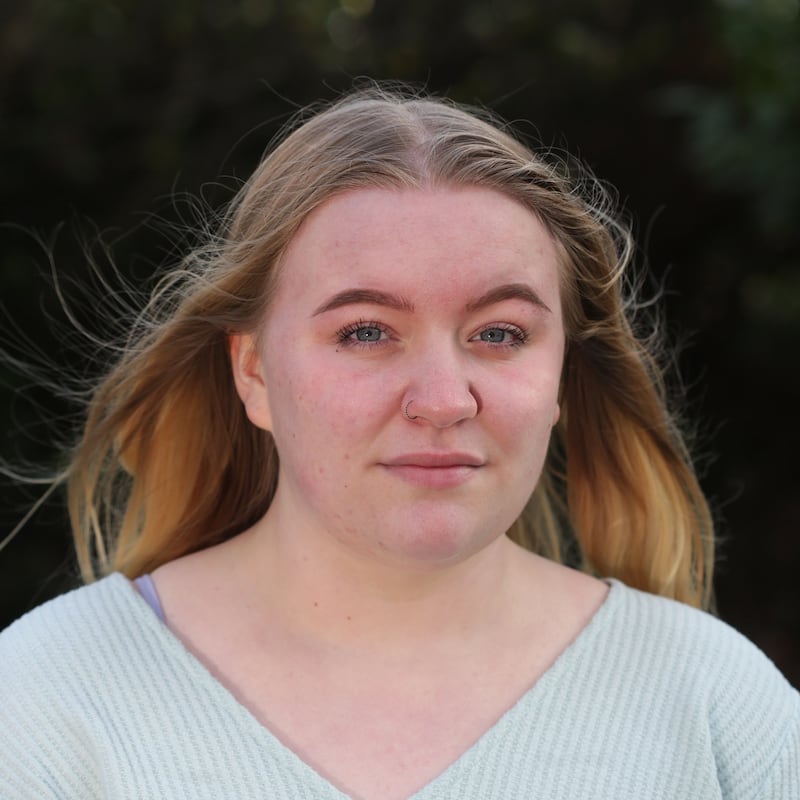The addicted boy
The boy began looking at pornography when he was nine or 10. By 11, he was “addicted” to it. After he turned 14, he started acting out what he had seen online. The first time he sexually abused his niece was when she was eight. The assaults on her became gradually more graphic and more invasive. The abuse was discovered when she was 11.
As she sentenced him to five years suspended last October for rape, High Court judge Ms Justice Deirdre Murphy warned that unless we get to grips with children accessing pornography as a society, "there will be further cases where people act out on foot of what they have seen. There is not much point teaching people about consent in first year in college if they have been exposed to years of pornography." The issue needed to be addressed at primary school level, she said. This was, she said, "an alarm call to society in general as to the dangers of a child accessing pornography".
A generation of children
It wasn't the first such alarm call. Pornography has been mentioned with increasing frequency in criminal proceedings involving teenagers accused of sex offences in recent years. "It's been coming through in a really obvious way for about the last three years in the Central Criminal Court, " says a senior legal source.
“What has really changed is the increasing level of rape offences – of children raping children, sometimes accompanied by physical violence. We’ve all been alarmed at what we’re seeing in the courts.”
The source added that early exposure to pornography is often cited as a factor in psychiatric or psychological reports issued by the defence. “The child perpetrator will [say] they had been looking at pornography on their phone from the age of nine, 10, 11 or 12. . . We have reared a generation of children who have been exposed to material that they should never have been exposed to.”

Cyberpsychologist Dr Mary Aiken believes exposure to abusive and misogynistic pornography can cause children to "view such behaviour as normal and acceptable. Arguably, this is a factor in the increase of cases coming before the Irish courts involving child perpetrators in which exposure to pornography has been cited as a factor. In my opinion, the State has failed to protect children from freely accessing this extremely damaging content. The State has failed in terms of duty of care to minors."
The other side of the argument is that pornography is everywhere and only a small minority of children who encounter it go on to engage in risky or inappropriate behaviours. One of the first major surveys on the issue, published by the UK’s National Society for the Prevention of Cruelty to Children (NSPCC) in 2016, found that about 28 per cent of 11- and 12-year-olds surveyed had encountered pornography online; two-thirds had seen it by the age of 16. Another survey in Britain last year found 60 per cent of 11- to 13-years-olds had first seen it unintentionally.
“Young people, by definition are immature and by definition are very interested in sex – boys in particular. If you make it easy for them, of course they’re going to get into it,” says Kieran McGrath, a social worker and an expert in the prevention of child sexual abuse.
Pornography is over-sexualising children and it desensitises them to stuff that they should be going to their parents about, or that they should be afraid of
Eighty-nine per cent of nine-year-olds have a smart device. A survey by CyberSafeKids of 4,000 primary school children found that one in four eight- to 12-year-olds encountered something online that made them uncomfortable. Worryingly, says Alex Cooney of CyberSafeKids, 30 per cent told no one about it.
The NSPCC report identified some other worrying trends: 53 per cent of boys who viewed pornography believed that what they had seen was realistic, as did 39 per cent of girls. Another study published last September in the British Journal of Criminology found that, on the top three porn sites in the UK, one in eight titles advertised to first-time users featured sexually violent, coercive or non-consensual content.
"Young people and children who are learning [about sex] from the likes of Pornhub or YouPorn are getting a very skewed" idea of what relationships are about, says child psychotherapist Dr Colman Noctor. "Pornography, by its nature, deals with themes of lack of consent, aggression, violence."
Experts say an interest in pornography in itself is not necessarily an indication of an underlying problem, and not all children who are exposed to it at a young age – even in its most extreme forms – will be negatively impacted. Research suggests that porn use does not lead to sexual aggression unless the individual has a predisposition to it. “I don’t believe that if you put a well-adjusted kid down in front of pornography, they’re going to go off and do something,” says McGrath. “But if you have any kind of chink in your psychological armour, it’s more likely.” For some children, “pornography is like a short circuit”, accelerating their sexual development. “The younger you’re exposed to it, the more harmful it is going to be.”

Spotting that predisposition is not easy. Traditional stereotypes about the kind of children that might be vulnerable to committing offences do not apply here. “They can come from nice leafy neighbourhoods and middle-class backgrounds and have apparently well-adjusted, functioning families. But one of the common denominators is pornography,” says McGrath.
Desensitised children
“Pornography is over-sexualising children and it desensitises them to stuff that they should be going to their parents about, or that they should be afraid of,” says one Irish man whose job puts him at the forefront of the battle against international child exploitation. The sensitive nature of his work means that he requested anonymity for this article.
He warns against feeding a moral panic about pornography and points out that it can be part of an older teenager’s normal and healthy sexual development. “I don’t see any major problem with fully formed adults using it,” he says. However, “I think it stands to reason that if you’re exposing children in early puberty – or even in pre-puberty – to forms of sex and sexuality that are designed for fully grown adults, you’re dealing with a societal change that is not good. You have generations of kids growing up to believe that the objectification of females for male gratification is okay; that choking is okay in sex, or slapping is okay in sex, or spitting is okay in sex.”
Others worry that exposure to the themes and tropes of pornography is doing some of the work of predators in terms of grooming children and normalising sexual behaviour before they are ready. Very young children, the international expert says, are being “desensitised to the sexual act in a manner that previous generations never were”.
Predators, says the expert, are “not necessarily having to look for vulnerability where they might have had to before. Now the children are making themselves vulnerable because they’re. . . exposed to that whole online world where anything goes.”
A recent Ipsos-MRBI national online safety study found that 8 per cent of 13- to 17-year-olds in Ireland had received sexual messages online, while 6 per cent had been sent unwanted requests for sexual information.
Orla’s story
Orla did not want her last name used for this article. She has rebuilt her life and doesn’t want what happened to her to follow her forever. But she has made the decision to tell her story in the hope that it might prevent the same thing happening to another child. “When it originally started, I was knocking on 11 years old,” she begins.
Lonely and living away from Ireland with her family, she was spending a lot of time alone in her room on her phone. She joined a Facebook group for teenagers who wanted to make friends. An older man friend-requested her. “It started very innocently. It was very friendly. And then about a few weeks after all that started, he asked for some photos of myself naked.”
He would 'contact me multiple times a day'. The demands 'went from just topless photos to full body. It then went to videos of me doing... an array of things'
She was shocked. “I did originally say no for about a week or two.” But he was “threatening to never speak to me again. And at the time, I was very, very lonely, very vulnerable. He was the only friend I had. So I did end up saying yes. And it just got very, very dark from there.”
Pretty soon, the man whom she had thought was her friend stopped messaging her and she began to get messages from another account claiming to be his brother, warning that if she didn’t keep sending him images, he would publish her photos online. This message began an almost three-year period of constant threats, abuse, exploitation and mental torture. “I was an 11-year-old trying to hide this massive, huge secret and it took such a toll physically and mentally. I just felt absolutely worthless. I felt disgusting. I felt so guilty because I was doing this to my family. I had no personal hygiene. I started smoking. I started hanging out with the wrong types of people. I started self-harming. I would hit myself a lot.”
The man didn’t want to meet her; what he wanted from her was a pipeline of child abuse imagery. She later realised that his Facebook friends were exclusively girls and young women. He would “contact me multiple times a day”. The demands “went from just topless photos to full body. It then went to videos of me doing. . . an array of things”. Instinctively, she knew not to include her face in the photographs.
The legal source interviewed for this article points out that “child victims are much more susceptible to threats once they’ve been filmed. Because they’re tech savvy; they know what a film can do.”
At one point, Orla’s abuser asked to see her younger sisters. “I just remember, not even answering and just taking, like 20 photos and videos, and sending them all to him in a bulk to distract him. That was probably the scariest thing in the whole time.”

Orla has a loving relationship with two committed and available parents. “I have the best parents, and we were very well cared for,” she says. They knew there was something wrong; they suspected bullying. She couldn’t tell them the truth. The legal source observes that this instinct is common among victims. “They don’t want to upset their parents and they don’t want them to have a visual representation of what happened.”
During the years she was abused, Orla tried to take her own life three times, and had inpatient treatment in a psychiatric hospital. Eventually her parents confided in a friend who had experience in the area of image-based sexual abuse. He showed Orla a video of the mother of Amanda Todd, a 15-year-old girl who died in 2012 by suicide after being a victim of cyberbullying and extortion. The following day, Orla tried again to take her own life. In the ambulance, she said just two words to her mother: "Amanda Todd."
That was the moment when the path towards Orla’s slow recovery began. Her abuser has never been prosecuted. “I have come to accept the fact that he’s probably never going to pay for what he’s done.” But with the help of her “amazing” therapist, her partner and her family, she has a wonderful life now and is no longer afraid of the images surfacing. “I’m very sure that they’re still out there and other people still have them. But it’s not a fear any more. Because at the end of the day, it wasn’t my fault. I’m a child in those photos and videos.”
Other impacts
What happened to Orla – image-based child sexual abuse – and what is emerging in the Irish courts are at the extreme end of the spectrum of the ways online harm can affect children.
At the other end of the spectrum, experts are concerned about other impacts of the early sexualisation of children. In his practice, child psychotherapist Colman Noctor says he has observed that porn use among teenagers is now so normalised that “it wouldn’t come up in therapy as something remarkable that a 14-year-old was accessing porn. There’s almost an assumption that it probably is the case.”
He says that research on the issue is scarce because of the ethical challenges of studies involving young people and pornography. As a result, “anything you say on this issue can be challenged from the point of view of ‘prove it’”. But he suspects it is causing anxiety for some teenagers and shaping the attitudes of others to relationships, sexuality and even their own bodies. He gives the example of young female clients who say, “I really enjoy getting ready to go out with my friends in the house, but actually going out and being an object of desire, I find very uncomfortable” or who show signs of “fear of maturation”, the fear of growing up or being seen through “the gaze of the other”.
He also believes “it is having an impact on actual intimate relationships – in terms of the disposability of relationships, and the idea of fidelity and monogamy. I call it the Tinderisation of society. Pornography is all about the idea that the person on the other side is disposable.”
Protecting children
The most important thing parents can do to help their children navigate this world, says McGrath, is to talk to them. “Be open and not judgmental in the sense of moralising. We don’t want to create any kind of panic among parents. But this is really serious stuff.”
However, Dr Aiken believes “parents are poorly equipped to keep up with kids in cyberspace” and that what is needed are “automated and secure solutions, such as robust age verification protocols along with online harm intervention initiatives”.
She refers to the recent Irish Online Safety and Media Regulation Bill, which includes provisions to tackle harmful content and provides for the appointment of an online safety commissioner. However, Dr Aiken predicts “this legislative intervention will fail spectacularly, unless our politicians and policymakers gain an understanding of the scale and complexity of the problems they are attempting to regulate.”
Children who engage in harmful behaviours after early exposure to pornography are very effectively helped with therapy and are unlikely to reoffend, experts say
She worked with the UK government to develop artificial intelligence and machine learning solutions aimed at targeting harmful content, and believes an initiative of that scale is needed here. But she says, there is “apparently, no appetite to even consider automated solutions. Therefore this attempt to regulate, in its current form, will be totally ineffective.”
Internationally, there is a growing demand among child safety groups for age verification on commercial pornography sites – which would require the use of a “hard identifier”, such as a passport or credit card. Plans to bring it in in the UK were shelved in 2017, but the issue is once again under discussion there, with campaigners threatening legal action against the Information Commissioner unless it is introduced. Other innovative solutions that have been considered, but never took off, include the introduction of a “.xxx” domain as a voluntary option for pornographic sites, which would make it easier to regulate access.
While we wait for industry-based solutions, Cooney of CyberSafeKids believes that sex education should go further – “not necessarily using words like porn” for young children, “but talking about content they might come across and what to do about it. We can’t roll back the tide. Kids are online, so it’s about what do we need to do as a society to better protect them, equip them, empower them online. That’s going to include parenting; an education system that acknowledges children are active online and supports them to be digitally literate [and] industry playing its part and putting safeguards and age verification in place.”
It is important to note that children can and do recover from even the most traumatic experiences. Children who engage in harmful behaviours after early exposure to pornography are very effectively helped with therapy and are unlikely to reoffend, experts say. Victims of image-based abuse can and do recover well with the right help and support.
Orla remembers being asked when she was 12 where she would be in 10 years. “I specifically remember thinking I will be in a grave. I’m going to end my life. I can’t keep doing this. And you know,” she says with almost a sense of wonder, “I’m so happy now. I have a great job, a great partner, great family life, great friends. I never ever imagined my life would be like this in a million years. I would have missed out on an amazing life. And I’m so glad that I waited around to see it.”
If you have been affected by any of the issues in this article, help is available. You can call the Samaritans on 116 123, or email jo@samaritans.ie, or visit samaritans.ie to find your nearest branch.
Kieran McGrath's guide for parents is available to download on kieranmcgrath.com



















